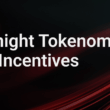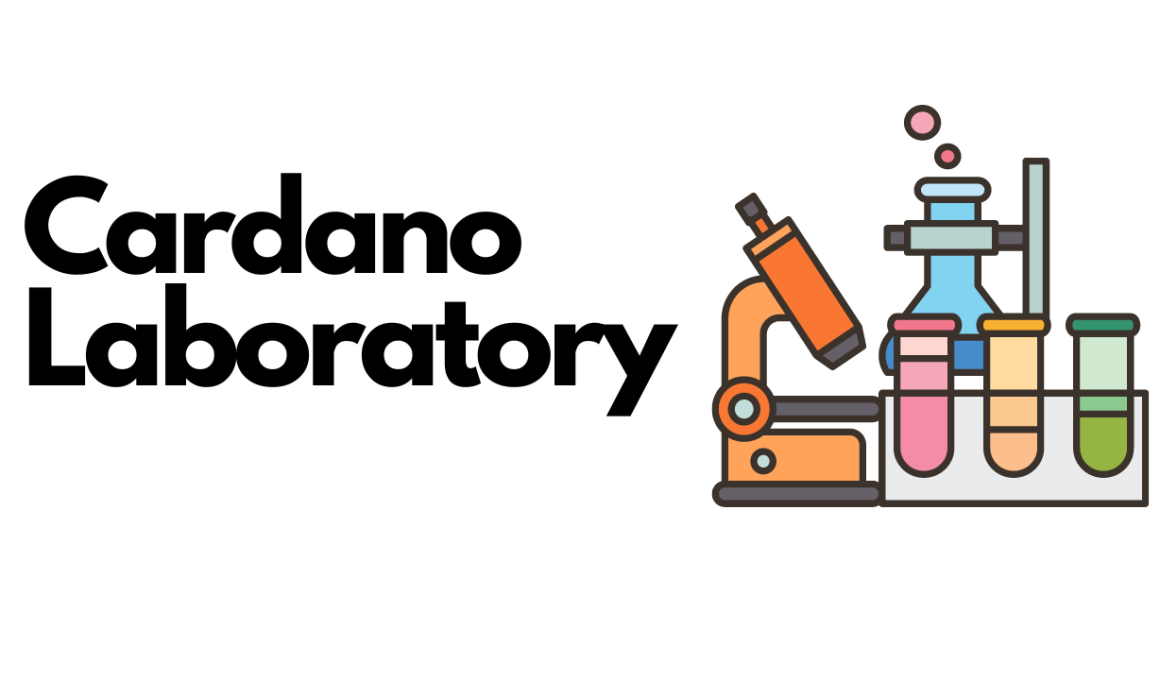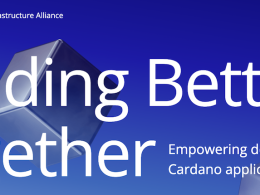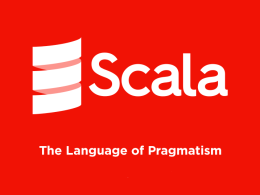Disclaimer: This article should not be considered as expert advice or an endorsement of the project. The article was written based on information provided by the project team during an interview, the proposal itself, and additional research conducted online. While every effort has been made to ensure accuracy, personal biases may have influenced the writing. Therefore, voters are strongly encouraged to conduct their own thorough research and due diligence on the proposals they intend to vote on. This article should be used as a starting point for further investigation and not as the sole basis for making a voting decision.
A Quick Rundown of The Proposal
Project Description:
Cardano Laboratory will be a comprehensive interface designed to allow users to interact directly with the Cardano network. This tool will enable the generation, signing, and submission of transactions to the Cardano network, as well as providing a wealth of tools to understand the operations within the Cardano network.
Through Cardano Laboratory, you can:
- Generate new key pairs for Cardano addresses.
- Construct and sign transactions.
- Submit signed transactions to the network.
- Query the network for data concerning transactions and account balances.
Link to Ideascale proposal: Link
Proof of Reputation
1. The team members possess skills and qualifications that aptly complement the creation of the proposed tool. Their vast experience, especially in the construction of products like Cardano Scan and Typhoon Wallet, as well as development tools for Cardano’s infrastructure layer, strengthens their ability to deliver on their goal.
2. This team has a track record of participating in Catalyst, with a total of eight funded proposals. Out of these, six have been delivered, the seventh has been completed on their end and is pending release by Ledger, while the eighth proposal is currently in progress.
Here are the links :
1. https://cardano.ideascale.com/c/idea/57834
2. https://cardano.ideascale.com/c/idea/58321
3. https://cardano.ideascale.com/c/idea/59258
4. https://cardano.ideascale.com/c/idea/59263
5. https://cardano.ideascale.com/c/idea/62843
6. https://cardano.ideascale.com/c/idea/61220
7. https://cardano.ideascale.com/c/idea/64765
8. https://cardano.ideascale.com/c/idea/59269 (In progress)
What is the amount requested by the project?
The proposal requests 398,000 ADA, which constitutes approximately 6.30% of the total fund in the specified category (i.e., 6,316,800 ADA).
What problem is this project solving?
Cardano Laboratory is a multifaceted tool designed to facilitate interaction with the Cardano network:
Interaction: It provides a streamlined interface to build, sign, and submit transactions to the Cardano network.
Testing: It offers a risk-free environment for users to simulate various operations and debug applications.
Data Retrieval: It offers tools to directly query account and transaction data from the network.
Simplifying Complexity: The Cardano Laboratory serves as an educational tool, simplifying the intricacies of Cardano’s operations for better understanding.
Impact
Cardano Laboratory is a beneficial tool within the Cardano ecosystem, providing a hands-on interface for developers to interact directly with the Cardano blockchain. By supporting a range of functionalities, it accelerates development processes and fosters innovation.
For users, it serves as an educational platform, demystifying the complexities of blockchain, and making the technology more accessible. It functions as a key asset in promoting understanding and enhancing efficiency within the Cardano network.
Feasibility
The team’s extensive experience, demonstrated by the successful completion of notable projects such as Cardanoscan and Typhon Wallet, strongly indicates the feasibility of their proposed project. Their commitment to quality and transparency, evident in their open-source contributions, further supports this. Therefore, given their track record and community endorsement, the team is highly capable of executing the project effectively.
Value For Money
The Cardano Laboratory project, backed by experienced developers, promises to advance the Cardano ecosystem by providing a vital toolset. With the cost distributed over essential components such as UI design, development, and QA, the project’s investment aligns with the anticipated benefits, suggesting a reasonable value-for-money proposition.
Now, Let’s Dive into the Details
What problem is this project solving?
The “Cardano Laboratory” project aims to address several significant issues within the Cardano ecosystem:
- Inadequate Developer Resources: At present, developers lack a comprehensive, interactive environment for experimentation, testing, and gaining a more nuanced understanding of Cardano’s operations. This deficiency can hamper the pace and quality of application development.
- Restricted Real-Time Testing: Developers require a safe and controlled environment for real-time experimentation and debugging. The absence of such an environment can impede innovation and delay problem-solving processes.
- Lack of Detailed Insights: The current ecosystem doesn’t offer sufficient tools for users and developers to easily explore and analyze transaction details or examine the state of accounts on the network, limiting their ability to make informed decisions or carry out in-depth analysis.
- Complex Blockchain Interactions: Without a user-friendly interface, developers and users may find it challenging to execute fundamental actions, such as generating key pairs and building, signing, and submitting transactions on the Cardano network.
- Limited Educational Resources: The intricacies of the Cardano blockchain are complex and can be challenging for newcomers and less technical individuals to comprehend. Currently, there’s a void of accessible, straightforward resources to facilitate understanding of these operations.
What is the solution offered by the project to solve the above mentioned problem?
- Interactive Development Platform: It aims to provide an all-in-one development platform that will allow developers to create, sign, and submit transactions, offering an efficient environment for building and testing applications on the Cardano network.
- Real-Time Testing Environment: It will provide a real-time, controlled environment for developers to experiment, prototype, and test solutions, speeding up innovation and problem-solving within the ecosystem.
- User-friendly Interface: The project will develop a user-friendly interface for essential blockchain operations such as generating key pairs, signing transactions, and exploring the state of accounts on the network, simplifying interactions with the Cardano network.
- In-depth Analytics: The tool will allow users to delve into the details of transactions and the state of accounts on the Cardano network, facilitating informed decision-making and in-depth analysis.
- Education & Learning: By providing a hands-on, educational resource, it enables users to understand and explore Cardano’s operations in a practical, approachable manner.
Stellar, another prominent blockchain platform, hosts a similar tool known as the Stellar Laboratory. The Stellar Laboratory is an interconnected set of tools that allows developers and users to create, sign, and submit transactions on the Stellar network, much like how the proposed Cardano Laboratory intends to operate for the Cardano network.
How accessible will be the solution to users?
The Cardano Laboratory project has a keen focus on accessibility, aiming to make the solution as user-friendly as possible for a wide array of users, from seasoned developers to newcomers in the Cardano ecosystem:
- Intuitive User Interface: With its user-friendly interface, the Laboratory is designed to be straightforward and easy to navigate, making complex operations like creating and signing transactions simple and efficient.
- Support for both Mainnet and Testnet: The tool is designed to operate both on the mainnet and the testnet, broadening its accessibility and providing a safe environment for experimentation and learning.
- Open Source & Free: The Laboratory will be available as a free tool, ensuring it’s accessible to everyone without financial constraints. It will be open-source, inviting contributions from the community to constantly improve and adapt to evolving needs.
- Support & Documentation: Comprehensive documentation and support will be provided to help users understand how to use the tool effectively, further enhancing its accessibility.
Feasibility of this Project
Track Record & Expertise: The team has exhibited an impressive history of accomplishment within the Cardano ecosystem, delivering projects with high levels of trust and accountability. This includes successful development and maintenance of tools like Cardanoscan and Typhon wallet, as well as the ADA integration within Ledger Live.
Aligned Goals: The primary objective of the project aligns well with the team’s expertise. The goal is to create a user-friendly, advanced tool for developers, leveraging the team’s extensive Cardano experience.
Detailed Roadmap: The project showcases a well-structured, phased approach to delivery with clear milestones, timelines, and intended outcomes. The roadmap ranges from initial development and transaction creation to the integration of advanced features, testing, refinement, and extensive community engagement.
Each stage of the plan appears to be meticulously designed to ensure gradual, manageable progress.
Milestone 1: Project Setup and Initial Development
- Deliverables: An established development environment and infrastructure for Cardano Laboratory and a designed user interface.
- Outcome: A foundation for further development and a preliminary user interface design.
Milestone 2: Transaction Creation and Submission
- Deliverables: Functionalities to create and sign transactions for both mainnet and testnet and support for specifying transaction details.
- Outcome: Developers will be able to create, test, and explore transactions within the Cardano Laboratory.
Milestone 3: Advanced Features
- Deliverables: Advanced functionalities, enhanced transaction input/output management, support for certificates for stake delegation and token minting, and CBOR functionality for transaction analysis and manipulation.
- Outcome: Developers will have access to more advanced features, enabling complex transaction scenarios and additional capabilities of the Cardano blockchain.
Milestone 4: Testing and Refinement
- Deliverables: Comprehensive testing of Cardano Laboratory, incorporation of user feedback, and refinement of the user interface and user experience.
- Outcome: A stable, secure, and user-friendly tool for developers to explore and build on the Cardano blockchain.
Milestone 5: Documentation and Community Engagement
- Deliverables: Comprehensive documentation and active engagement with the Cardano community for feedback and collaboration.
- Outcome: Clear guidance for developers using Cardano Laboratory, fostering a collaborative and informed developer community.
In essence, each milestone focuses on specific deliverables, ensuring the gradual evolution of the Cardano Laboratory from initial setup to a full-fledged, user-friendly tool for the developer community.
Project Dependencies
According to the team, the Cardano Laboratory project does not have any external dependencies.
Budget Breakdown
The budget for the Cardano Laboratory project is set at a total cost of 398,000 ADA, spanning across a seven-month development timeline.
This budget encompasses three main areas of focus: User Interface design, code development, and testing & quality assurance.
The development team consists of three core members, each responsible for a distinct role. These roles include a UI Engineer, a Cardano Specialist, and an Integration Engineer. In addition, a QA Engineer is also budgeted to ensure the project’s quality standards.
Each developer costs 106,000 ADA, bringing the total cost for the development team to 318,000 ADA. The QA Engineer is budgeted at 80,000 ADA.
Impact Assessment:
Measurable Outcomes:
The Cardano Laboratory project’s influence can be evaluated using a blend of quantitative and qualitative metrics.
Quantifiable data includes:
User Adoption: Monitoring user adoption can be achieved through website analytics to some degree.
Community Feedback: One of the primary indicators of the project’s success can be the quantity and quality of feedback received from the Cardano community. This can be measured through various forums, social media engagement, and direct user feedback.
Code Contributions: The number of external contributions to the project’s open-source code repository can also indicate the project’s active use and impact.
Qualitative measures include:
User Satisfaction: User satisfaction can be gauged through surveys and feedback forms. This will provide insights into how users perceive the tool’s usability, relevance, and effectiveness.
Is this method viable?
Yes, it incorporates both measurable data and user feedback, providing a multifaceted understanding of the project’s impact. However, website analytics might not provide a full representation of user engagement since it doesn’t capture the depth of interaction or the exact user experience with the tool.
The potential limitations of website analytics can be supplemented by the direct feedback from the community and developers. Hence, a combined approach could offer a more comprehensive understanding of the project’s success and areas for improvement.
Sustainability:
Business Model and Monetization Plans for Future Sustainability:
Given the open-source nature and public goods intent of the Cardano Laboratory project, it does not follow a traditional business model or incorporate monetization plans for sustainability. The primary focus of this project is to provide a robust and user-friendly tool for developers, fostering growth and innovation in the Cardano ecosystem.
The project’s sustainability is intended to be maintained through continuous community engagement, open-source contributions, and support from the core development team.
Risk and Contingency Planning:
Every project faces potential risks and challenges.
Risk Identification:
1. What are the possible risks or challenges that might impede the project?
Potential risks and challenges could include unforeseen technical difficulties during development, such as issues with integrating the advanced functionalities of Cardano into the Laboratory tool.
2. Will the Project be Open-Sourced?
Yes, the project will be fully open-sourced. The intent is to allow the developer community to review, contribute to, and utilize the Cardano Laboratory tool. This can also aid in mitigating potential risks as it allows for community-driven problem-solving.
3. Are there contingency plans if they are not funded by Catalyst?
The project’s progression significantly hinges on the funding secured from the Catalyst proposal. If the proposal fails to gain funding, the team may face challenges in moving forward with the project.
Conclusion
In conclusion, the Cardano Laboratory project:
- Aims to address a significant gap in the Cardano ecosystem by providing a sophisticated yet user-friendly tool for developers and normal users to create, sign and submit transactions of any combination and parameters of choice.
- The proposal is backed by a skilled and experienced team with a proven track record in the Cardano community.
- Offers a clear, structured, and feasible plan to execute the project, with a comprehensive budget breakdown to ensure value for money.
- The project will be open-sourced, which will enhance its transparency, credibility, and community engagement, and allows it to act as a public good within the Cardano ecosystem.
- However, the project’s execution heavily relies on the Catalyst funding, which may pose a challenge if the proposal does not get funded.










